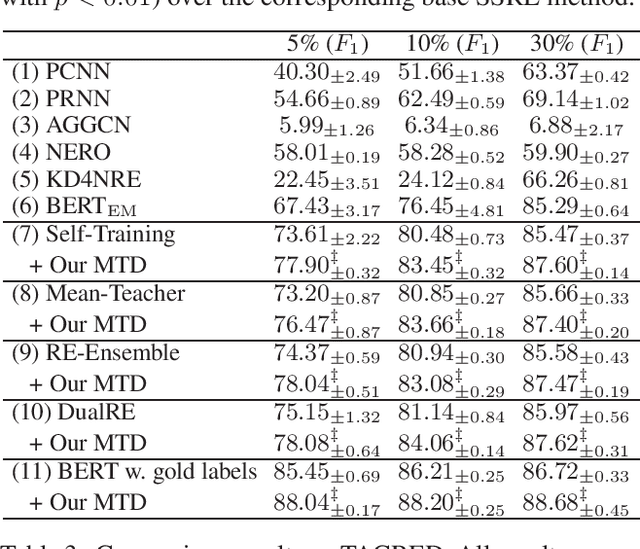Wanli Li
OmniGen2: Exploration to Advanced Multimodal Generation
Jun 23, 2025Abstract:In this work, we introduce OmniGen2, a versatile and open-source generative model designed to provide a unified solution for diverse generation tasks, including text-to-image, image editing, and in-context generation. Unlike OmniGen v1, OmniGen2 features two distinct decoding pathways for text and image modalities, utilizing unshared parameters and a decoupled image tokenizer. This design enables OmniGen2 to build upon existing multimodal understanding models without the need to re-adapt VAE inputs, thereby preserving the original text generation capabilities. To facilitate the training of OmniGen2, we developed comprehensive data construction pipelines, encompassing image editing and in-context generation data. Additionally, we introduce a reflection mechanism tailored for image generation tasks and curate a dedicated reflection dataset based on OmniGen2. Despite its relatively modest parameter size, OmniGen2 achieves competitive results on multiple task benchmarks, including text-to-image and image editing. To further evaluate in-context generation, also referred to as subject-driven tasks, we introduce a new benchmark named OmniContext. OmniGen2 achieves state-of-the-art performance among open-source models in terms of consistency. We will release our models, training code, datasets, and data construction pipeline to support future research in this field. Project Page: https://vectorspacelab.github.io/OmniGen2; GitHub Link: https://github.com/VectorSpaceLab/OmniGen2
DropEdge not Foolproof: Effective Augmentation Method for Signed Graph Neural Networks
Sep 29, 2024



Abstract:The paper discusses signed graphs, which model friendly or antagonistic relationships using edges marked with positive or negative signs, focusing on the task of link sign prediction. While Signed Graph Neural Networks (SGNNs) have advanced, they face challenges like graph sparsity and unbalanced triangles. The authors propose using data augmentation (DA) techniques to address these issues, although many existing methods are not suitable for signed graphs due to a lack of side information. They highlight that the random DropEdge method, a rare DA approach applicable to signed graphs, does not enhance link sign prediction performance. In response, they introduce the Signed Graph Augmentation (SGA) framework, which includes a structure augmentation module to identify candidate edges and a strategy for selecting beneficial candidates, ultimately improving SGNN training. Experimental results show that SGA significantly boosts the performance of SGNN models, with a notable 32.3% improvement in F1-micro for SGCN on the Slashdot dataset.
Generative Meta-Learning for Zero-Shot Relation Triplet Extraction
May 03, 2023



Abstract:The zero-shot relation triplet extraction (ZeroRTE) task aims to extract relation triplets from a piece of text with unseen relation types. The seminal work adopts the pre-trained generative model to generate synthetic samples for new relations. However, current generative models lack the optimization process of model generalization on different tasks during training, and thus have limited generalization capability. For this reason, we propose a novel generative meta-learning framework which exploits the `learning-to-learn' ability of meta-learning to boost the generalization capability of generative models. Specifically, we first design a task-aware generative model which can learn the general knowledge by forcing the optimization process to be conducted across multiple tasks. Based on it, we then present three generative meta-learning approaches designated for three typical meta-learning categories. Extensive experimental results demonstrate that our framework achieves a new state-of-the-art performance for the ZeroRTE task.
From Consensus to Disagreement: Multi-Teacher Distillation for Semi-Supervised Relation Extraction
Dec 02, 2021



Abstract:Lack of labeled data is a main obstacle in relation extraction. Semi-supervised relation extraction (SSRE) has been proven to be a promising way for this problem through annotating unlabeled samples as additional training data. Almost all prior researches along this line adopt multiple models to make the annotations more reliable by taking the intersection set of predicted results from these models. However, the difference set, which contains rich information about unlabeled data, has been long neglected by prior studies. In this paper, we propose to learn not only from the consensus but also the disagreement among different models in SSRE. To this end, we develop a simple and general multi-teacher distillation (MTD) framework, which can be easily integrated into any existing SSRE methods. Specifically, we first let the teachers correspond to the multiple models and select the samples in the intersection set of the last iteration in SSRE methods to augment labeled data as usual. We then transfer the class distributions for samples in the difference set as soft labels to guide the student. We finally perform prediction using the trained student model. Experimental results on two public datasets demonstrate that our framework significantly promotes the performance of the base SSRE methods with pretty low computational cost.
Exploit Multiple Reference Graphs for Semi-supervised Relation Extraction
Oct 22, 2020



Abstract:Manual annotation of the labeled data for relation extraction is time-consuming and labor-intensive. Semi-supervised methods can offer helping hands for this problem and have aroused great research interests. Existing work focuses on mapping the unlabeled samples to the classes to augment the labeled dataset. However, it is hard to find an overall good mapping function, especially for the samples with complicated syntactic components in one sentence. To tackle this limitation, we propose to build the connection between the unlabeled data and the labeled ones rather than directly mapping the unlabeled samples to the classes. Specifically, we first use three kinds of information to construct reference graphs, including entity reference, verb reference, and semantics reference. The goal is to semantically or lexically connect the unlabeled sample(s) to the labeled one(s). Then, we develop a Multiple Reference Graph (MRefG) model to exploit the reference information for better recognizing high-quality unlabeled samples. The effectiveness of our method is demonstrated by extensive comparison experiments with the state-of-the-art baselines on two public datasets.
 Add to Chrome
Add to Chrome Add to Firefox
Add to Firefox Add to Edge
Add to Edge